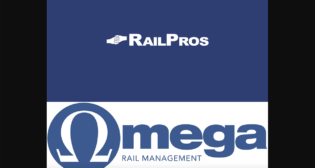
A turning point for crude by rail?
Written by William C. Vantuono, Editor-in-ChiefAre the glory days of CBR over, or have we, perhaps, reached a turning point of some kind?
Regular readers will already recognize that I have been something of a cheerleader for CBR since it became apparent that it had the ability to be a big winner for the rails. I even wrote a piece where I congratulated the Class I’s for not shooting themselves in the foot by overpricing or providing service that did not met the demands of this emerging traffic. And yes, I have been predicting an eventual accident or accidents with CBR or NGL (natural gas liquids) as a precursor to asking what was likely to happen next.
Well, now we are at that “next” time.
Immediately following the Montreal, Maine & Atlantic’s Lac-Mégantic CBR derailment, newspapers were full of “green” comments bemoaning our reliance on hydrocarbons in general and crude-by-rail in particular. We also had pipeline pundits bemoaning the greens for having had a hand in putting the brakes on new pipeline construction. What I haven’t seen are any comments from the interested parties in the CBR industry standing up for the industry in which they are involved.
Perhaps keeping one’s head low is the best tactic for industry insiders. There is no upside in trying to put the best light on something that is clearly a disaster.
Regulatory authorities in both Canada and the United States already had tank car safety squarely in their sights and, even prior to the CBR derailment, the industry had been expecting some of the regular safety tightening that the tank car industry experiences each year. (Editor’s note: Every new tank car built since late 2011 has been constructed to stringent new safety standards, among which are recessed valves, double-wall tank shells, stronger head shields, and shelf couplers. Yet to be clarified is whether the tank cars involved in the Lac-Mégantic disaster were of an older design.)
In the wake of the derailment, Canadian rail regulators have been looking at the facts and making common sense pronouncements concerning the setting of handbrakes and the issue of leaving trains like the one that rolled down the hill in Quebec on a main line unattended.
But to answer the question of whether any of these factors will have a significant impact on the growth of CBR in North America, one needs to look at the situation from the 50,000-foot level:
• For decades, many of the current CBR players such as tank car lessors and shippers have been moving far more dangerous commodities by rail. They have been doing it because rail is one of the safest ways to move hazardous liquids in bulk across long distances. Now, instead of a chlorine or anhydrous ammonia derailment, we have crude oil.
• Again, over the decades, there have been a few spectacular train accidents involving tank cars that have resulted in fatalities and property damage. Yet no one is suggesting that there is a better way than rail to move hazardous commodities.
• What has occurred over time is a continued emphasis on making tank cars safer and safer. This process has often proceeded with tank car builders, owners, and operators taking the lead.
• The CBR industry viewed from the 50,000-foot level is already a major component of the North American energy picture. Because there are rail lines where they need to be to move newly fracked oil and gas, that oil and gas can be moved efficiently to where it needs to go.
So what’s likely to happen to CBR in the aftermath of this horrendous rail disaster?
It is not difficult to predict that the industry (voluntarily or otherwise) will increase its efforts to assure it is running safely in all respects.
I also think there will be a full and frank discussion about additional safety enhancements that may be possible in new car design as well as to the existing fleet of tank cars. However, during this discussion I am sure that one or more experts will point out that a train of five locomotives trailing more than 70 fully loaded tank cars was barreling down hill at nearly 70 miles an hour when the accident occurred. I am not a structural engineer, but I seriously doubt that at those speeds even the best engineered and manufactured tank cars would have survived uniformly intact.
So, it is my prediction that CBR will continue to grow after significant industry and regulatory introspection. But like most things after a major accident, it will be more involved and more expensive. (By the way, as a good friend in the industry suggested to me recently, given the fact that the existing fleet of tank cars is practically 100% utilized, and given the long lead times for new cars, any equipment enhancements that are ultimately required may take several years to implement.)



